It’s no secret that I am a kelp enthusiast. Whether it be diving in it, photographing it, farming it or eating it, when a seaweed opportunity arises, I go running. So, when offered the opportunity to spend time in California, the unquestionable world centre of Kelp Forests, I was literally on the next plane out of Australia.
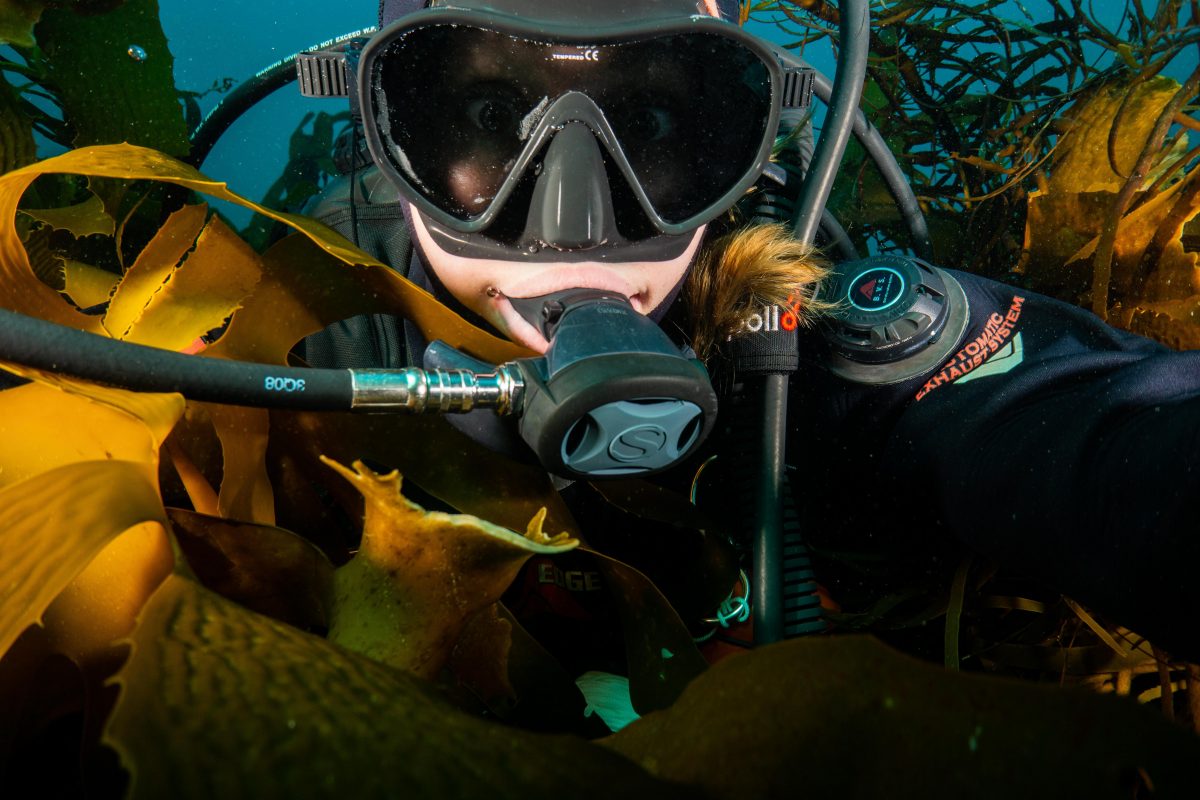
Photo: Joanna Smart
I’ve spent the last few weeks travelling the coastline of California by train, learning about all California has to offer in regard to diving, marine science and outreach. It’s safe to say, the list is positively endless. What has really struck me so far is how connected the Californians are to the marine environment. Every city seems to have research institutions, photographers, filmmakers, diving operations and underwater enthusiasts, all dedicated to exploring and conserving the ocean.

Photo: Joanna Smart
After leaving Tasmania on yet another long-haul flight, I started my journey in San Francisco where I hit my first hurdle – no luggage arrival. This wouldn’t usually bother me, however, this was the 6th time my bags have been lost this year, so my patience was wearing a little thin. Thanks to the generous hospitality of OWUSS North American Coordinator Alison La Bonte and her husband Bob, I was able to wait out the luggage arrival with a change of clothes.
From San Francisco, Alison was kind enough to lend me her car to make the journey down to the world-famous Monterey Bay where I was to spend some time visiting various marine-related organisations. Whilst in Monterey, I was generously hosted by Sandie and Wells Shoemaker, parents of 1997 NA Scholar, Sara Shoemaker-Lind. Their beautiful home in the California redwoods was spectacular and they provided wonderful hospitality during my stay.
My first stop in Monterey was a visit to the Monterey Bay Aquarium Research Institute (MBARI). MBARI is an oceanographic research centre, where scientists and engineers work in close collaboration to explore the ocean’s depths.
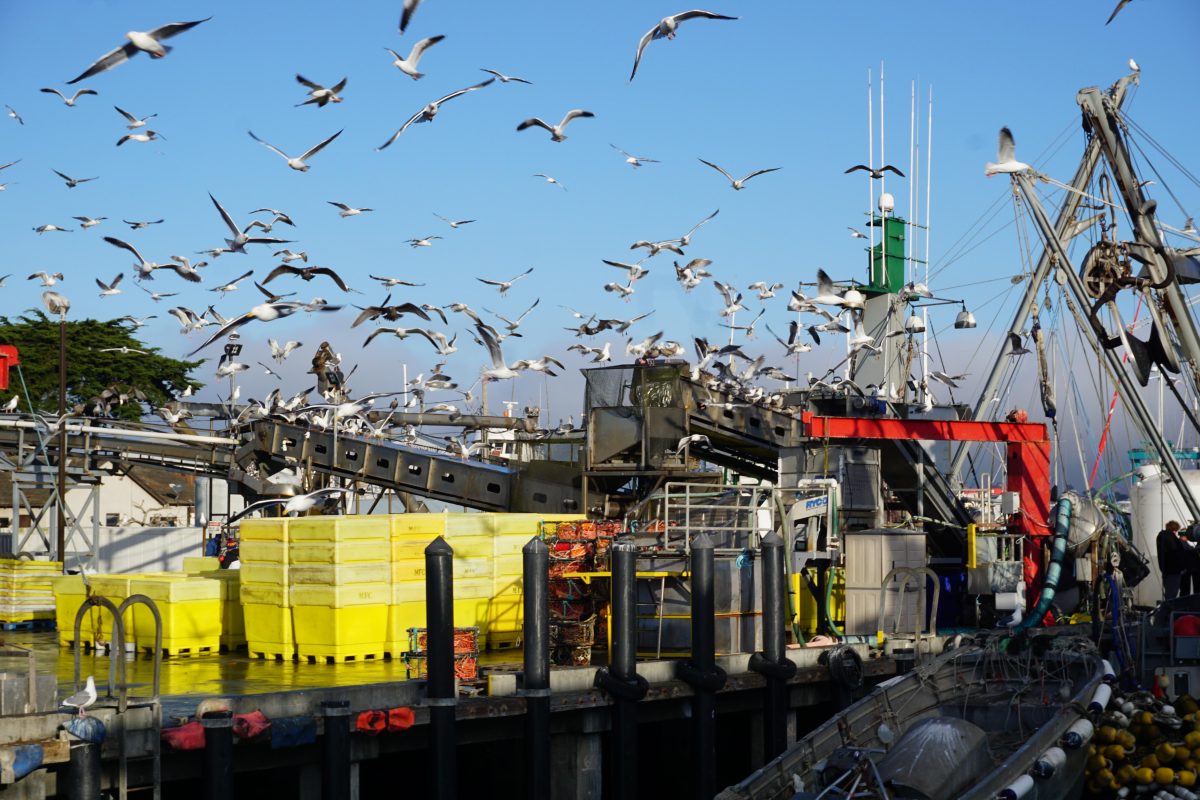
Photo: Joanna Smart
I was met by Dr George Masumoto, a senior education and research specialist at MBARI. George took me out on the R.V Western Flyer, one of MBRAI’s main research vessels. The aim of the journey was to deploy the ROV Doc Ricketts and do some promotional/outreach filming work in conjunction with MBARI’s other research vessel, the R.V Rachel Carson and other ROV, Ventana.
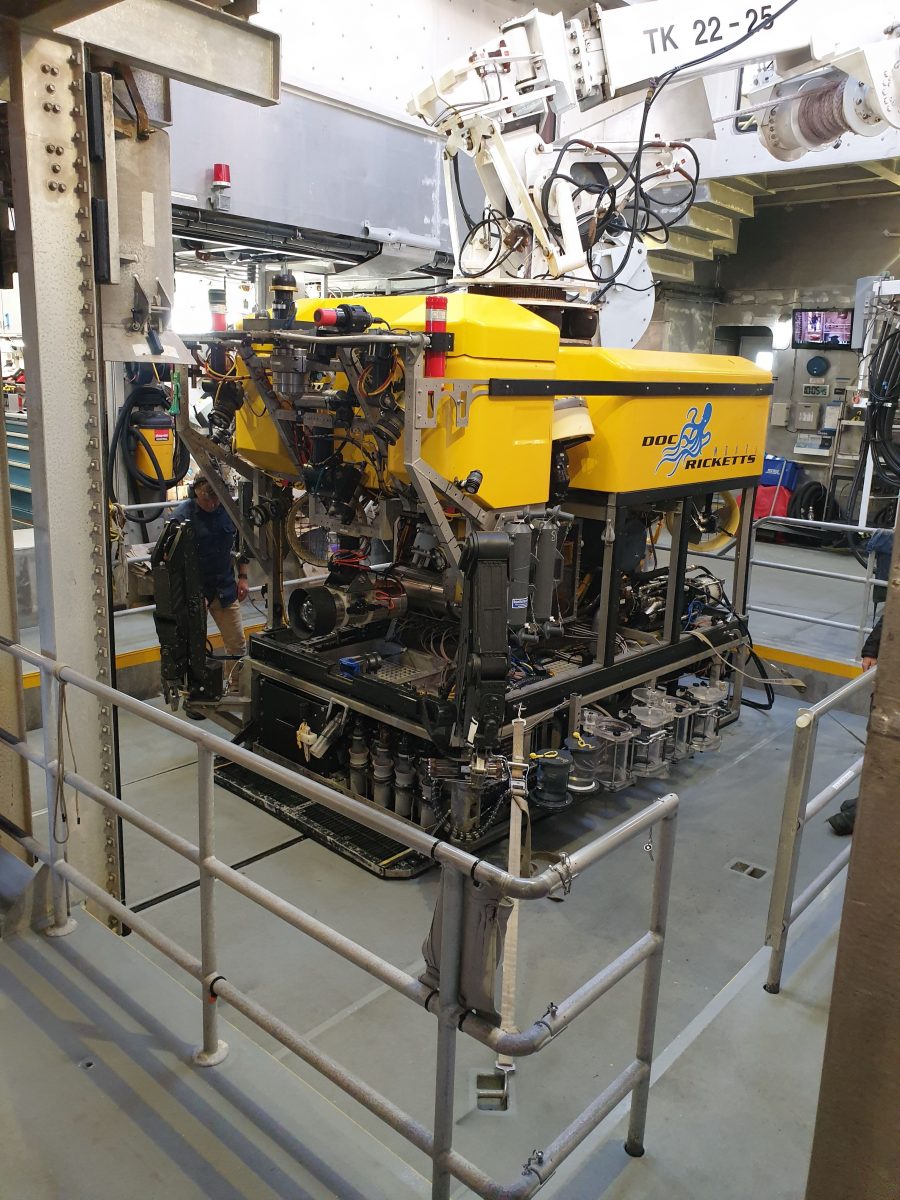
Photo: Joanna Smart
MBARI are world leaders in deep ocean exploration. As a nerd of all thing’s to do with technology, I was incredibly excited to see the ROV’s in action. The control panel on board the ship resembles a very advance video game set up, with LED screens, joysticks and robotic arms. I was able to watch the ROV descend to 700 m, where it met Ventana and commenced filming work.
We filmed several pre-planned shots including the ROVs taking sediment samples, manoeuvring and collecting samples with their robotic shark. The footage was really exciting, and we even got to see a sleeper shark on camera. Check out the article published by MBARI on the work here.
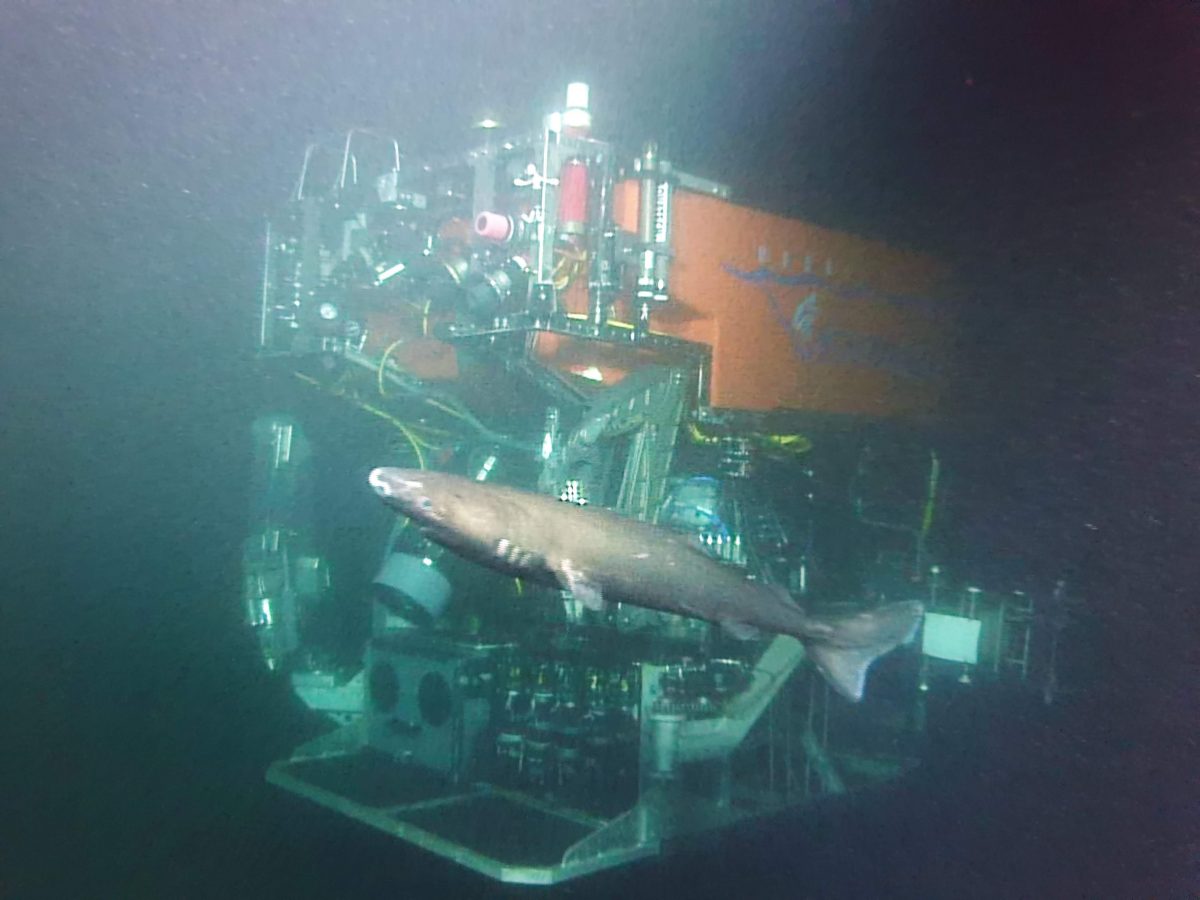
Photo: Joanna Smart (via. ROV Dic Ricketts)
After several hours in the deep sea, it was time to bring the ROVs to the surface. My day (year?) was made when the crew asked if I’d like to pilot the ROV for a while. I was able to spend half an hour driving around the deep sea looking for creatures and you could not wipe the smile off my face. I found several unusual fish and jellyfish and left with a newfound passion for deep ocean exploration.
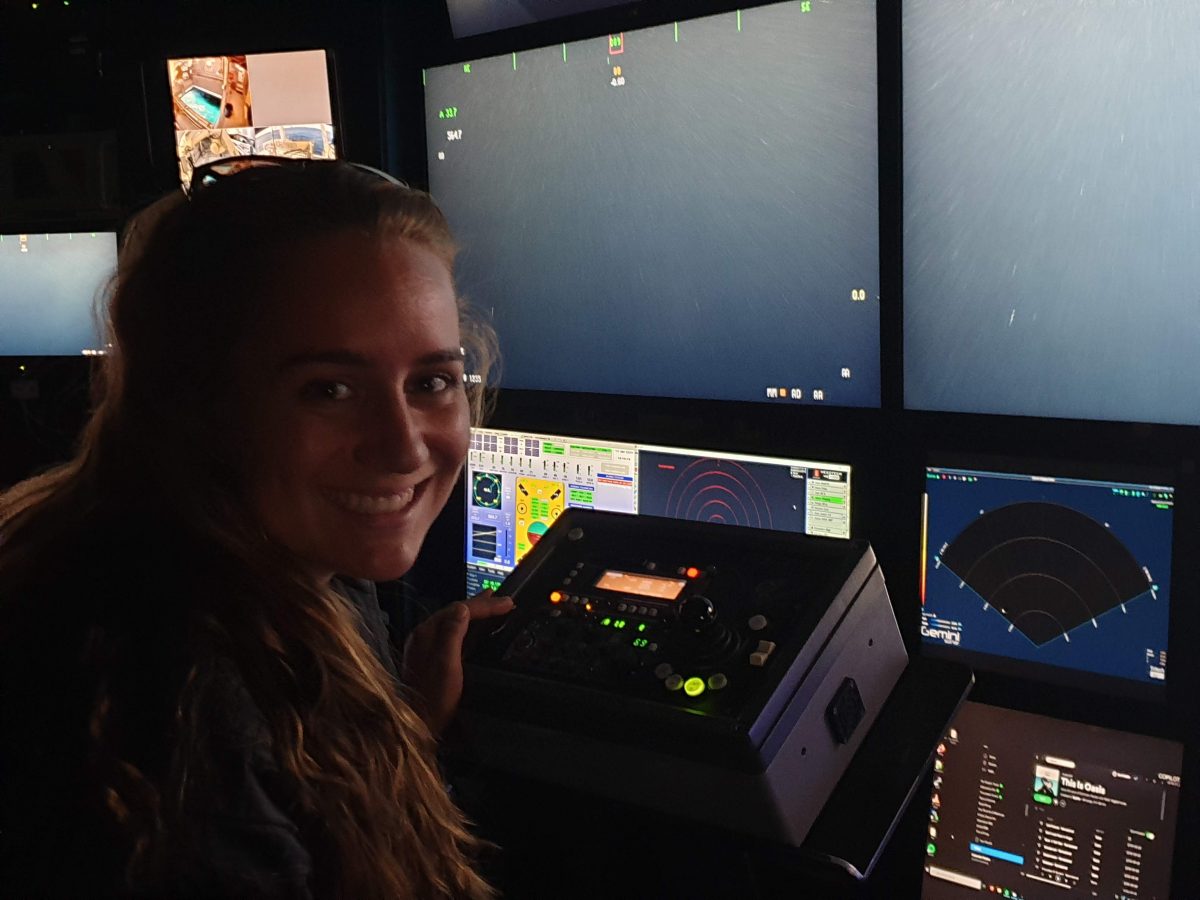
Photo: George Masumoto
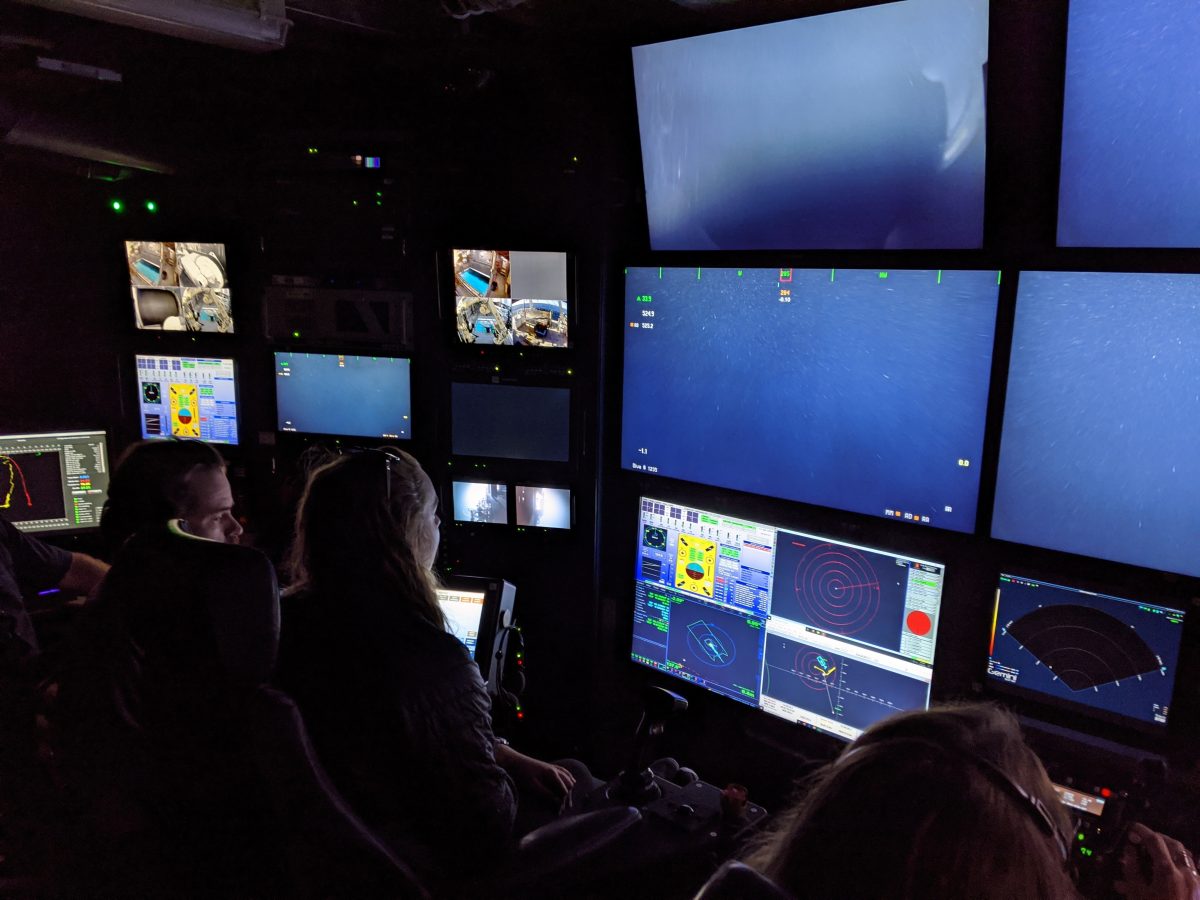
Photo: George Masumoto
My next stop in Monterey was a visit to the wonderful team at Backscatter. Backscatter are underwater photo and video specialist, providing all things related to underwater photography. I was able to spend time pouring over all their underwater photography gadgets – it was only monetary restraints that prevented me from leaving with bags full of stuff.
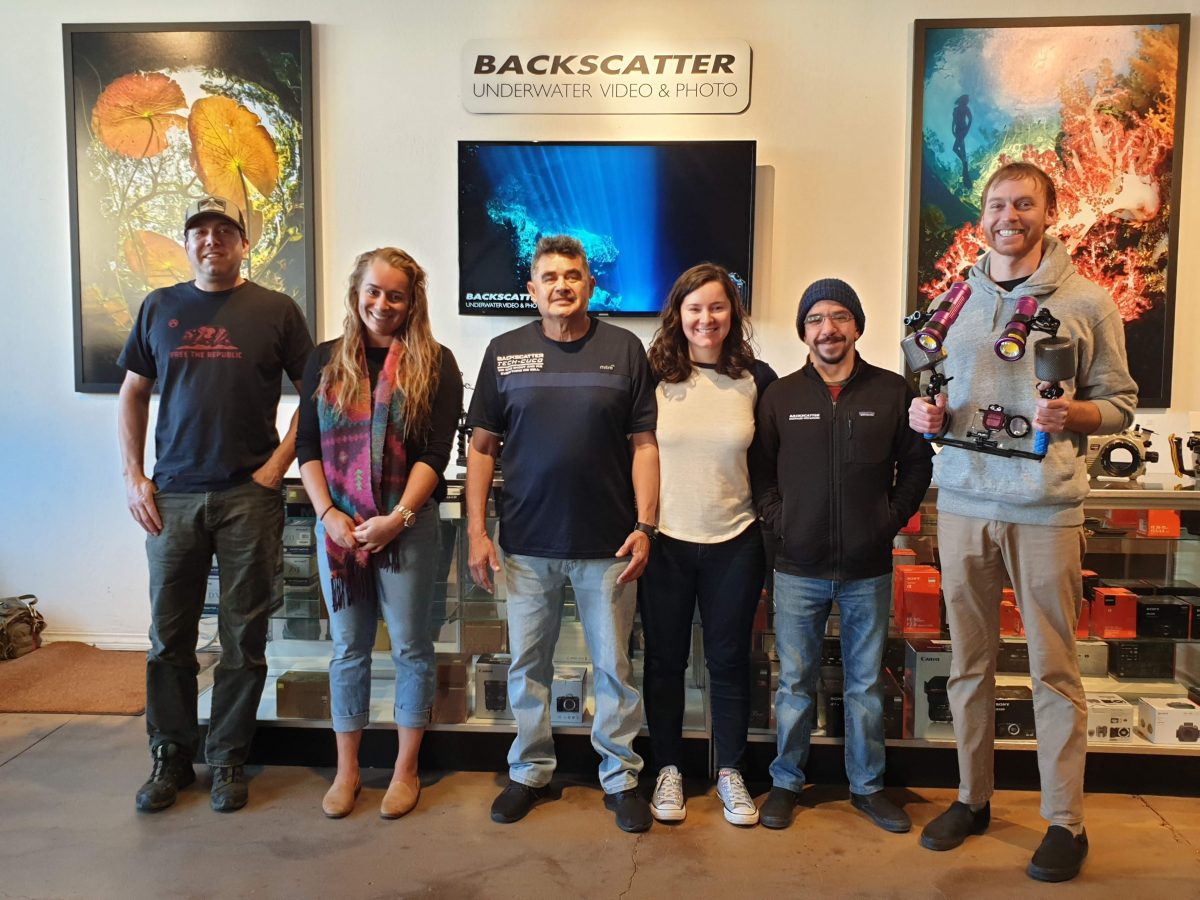
Team member Dylan and I then went for a dive on the Monterey breakwater. It was my first dive in California, and it was great! At home, Tasmania has lost more than 90% of its Giant Kelp due to a combination of ocean warming, decreased nutrients and invasive species, so I was incredibly excited to see so much healthy kelp. (for more info about the state of Giant Kelp Forests in Tasmania, check out this Link – I could write a whole blog article on that alone). During the dive, we were surrounded by gregarious California sea lions; saw giant anemones and I got my first glimpse of the California Sheepshead wrasse. Thank you so much to Becca, Dylan and the team at Backscatter for this opportunity.
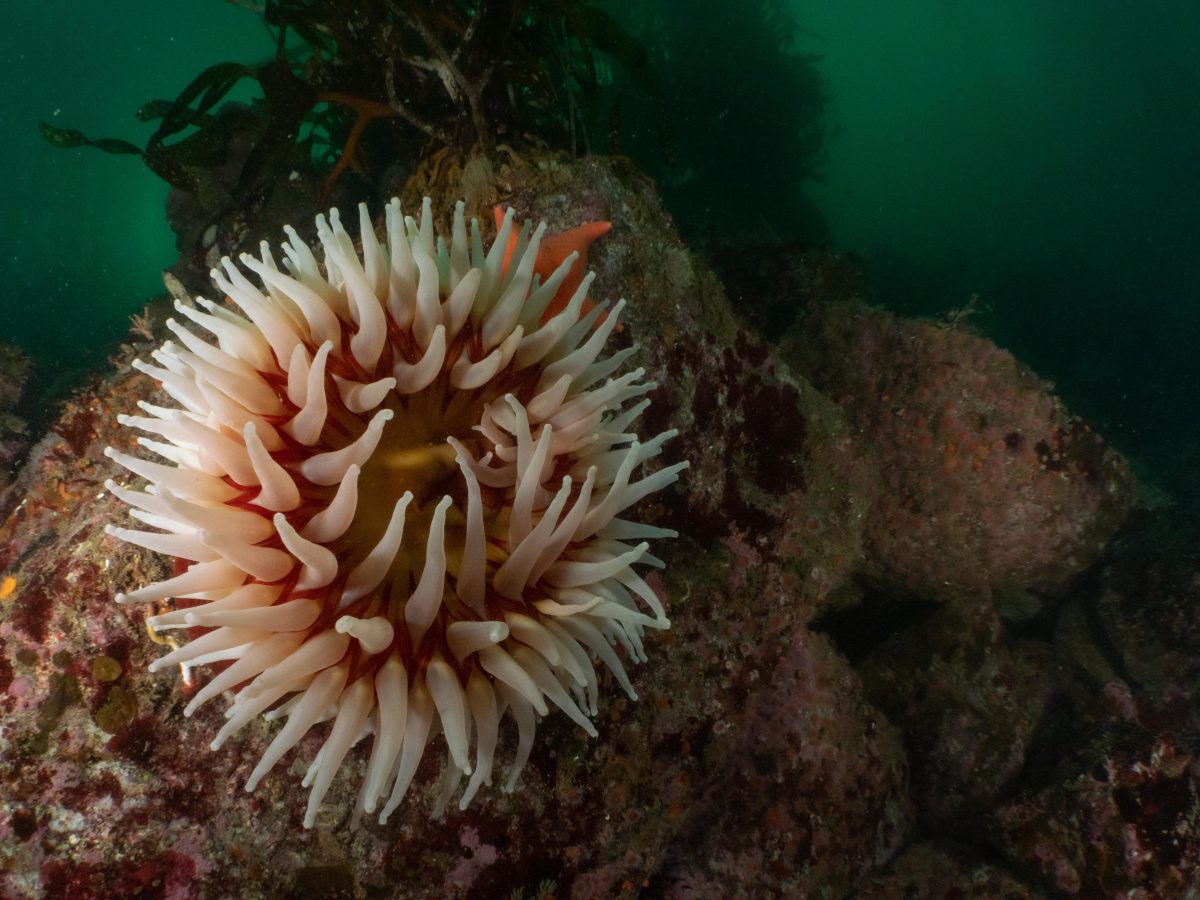
Photo: Joanna Smart
From Backscatter, my next stop was the Monterey Bay Aquarium. I was incredibly excited to visit the aquarium. As a child, I dragged my parents to pretty much every aquarium in Australia (sorry mum!) and Monterey had always been at the top of my list of places to visit.
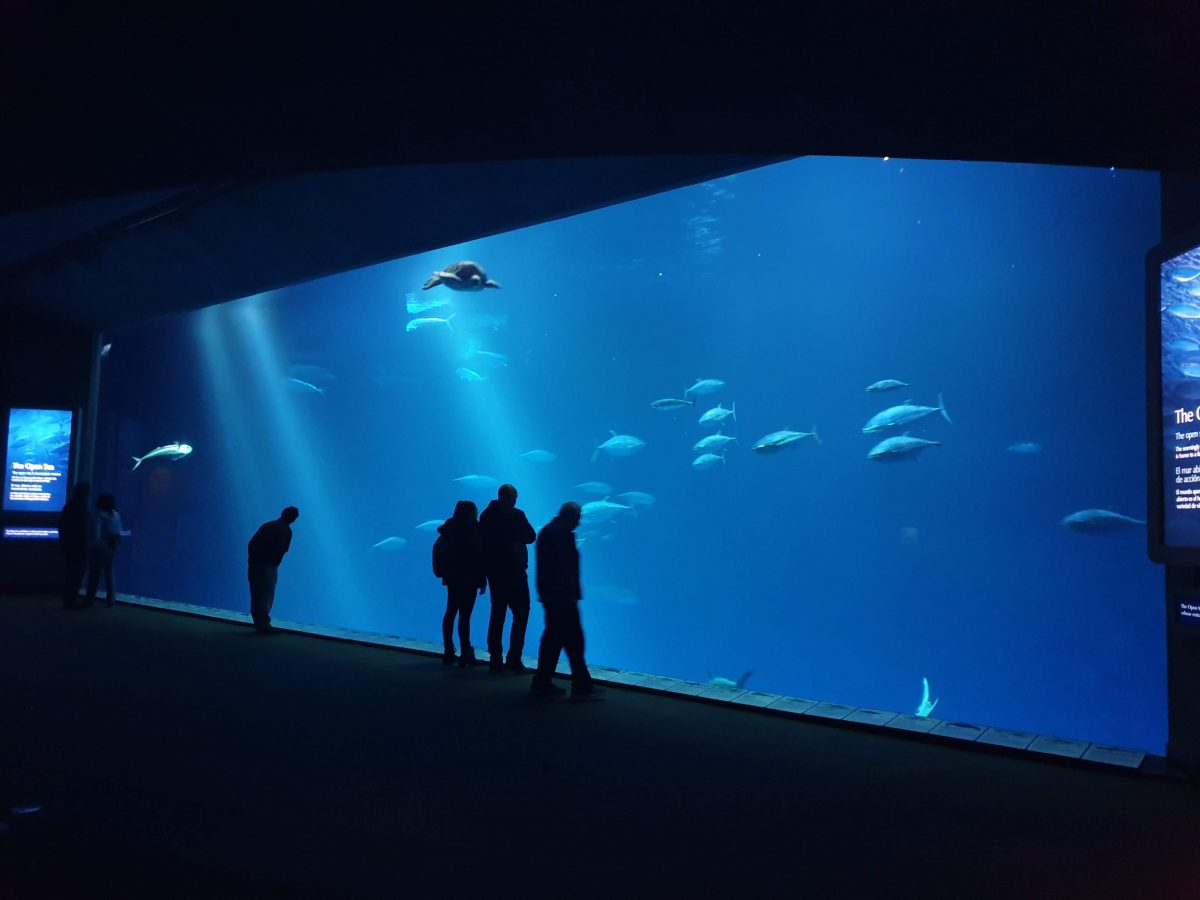
Photo: Joanna Smart
Perhaps more famous in Australia as the locations of the Finding Dory film, Monterey Bay Aquarium receives nearly 2 million visitors every year. It is renowned for its presentation of the local marine environment and providing public education and outreach, bringing the community closer to the underwater world.
I was taken on a behind-the-scenes tour by Diving Safety officer, Scott Chapman, who explained all the logistics of running a diving operation inside one of the world’s most famous aquariums. We visited their kelp forest exhibit (Monterey Bay Aquarium was the first aquarium to exhibit live kelp in 1984), their sea otters and their open-ocean tanks.
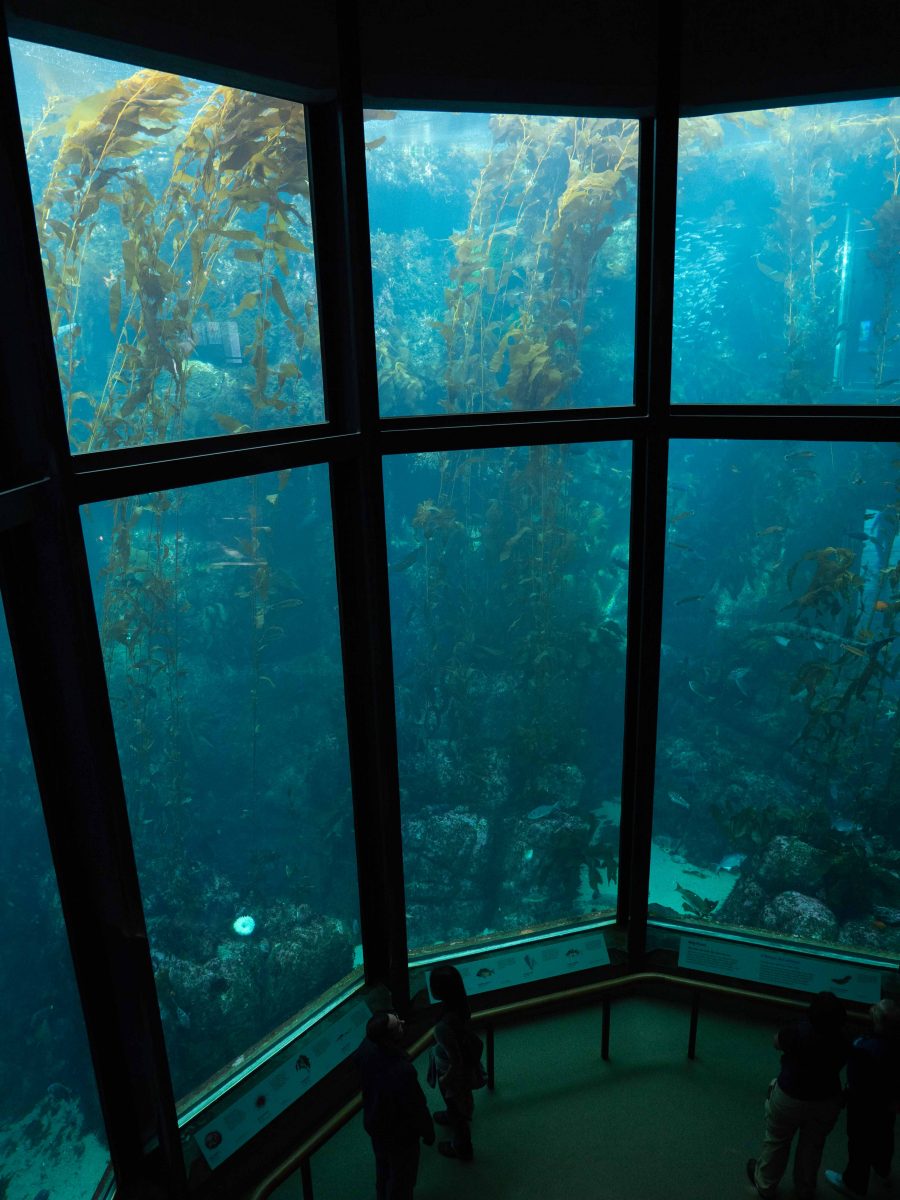
Photo: Joanna Smart
Next, Scott gave me the opportunity to dive in the kelp forest exhibit. This was a huge bucket list moment for me. Whilst I had visited aquariums before, I never had the opportunity to dive in one. Diving inside the exhibit was amazing. Being able to interact with people on the outside and being surrounded by so much life was inspiring, and I cannot thank Scott enough for this experience.
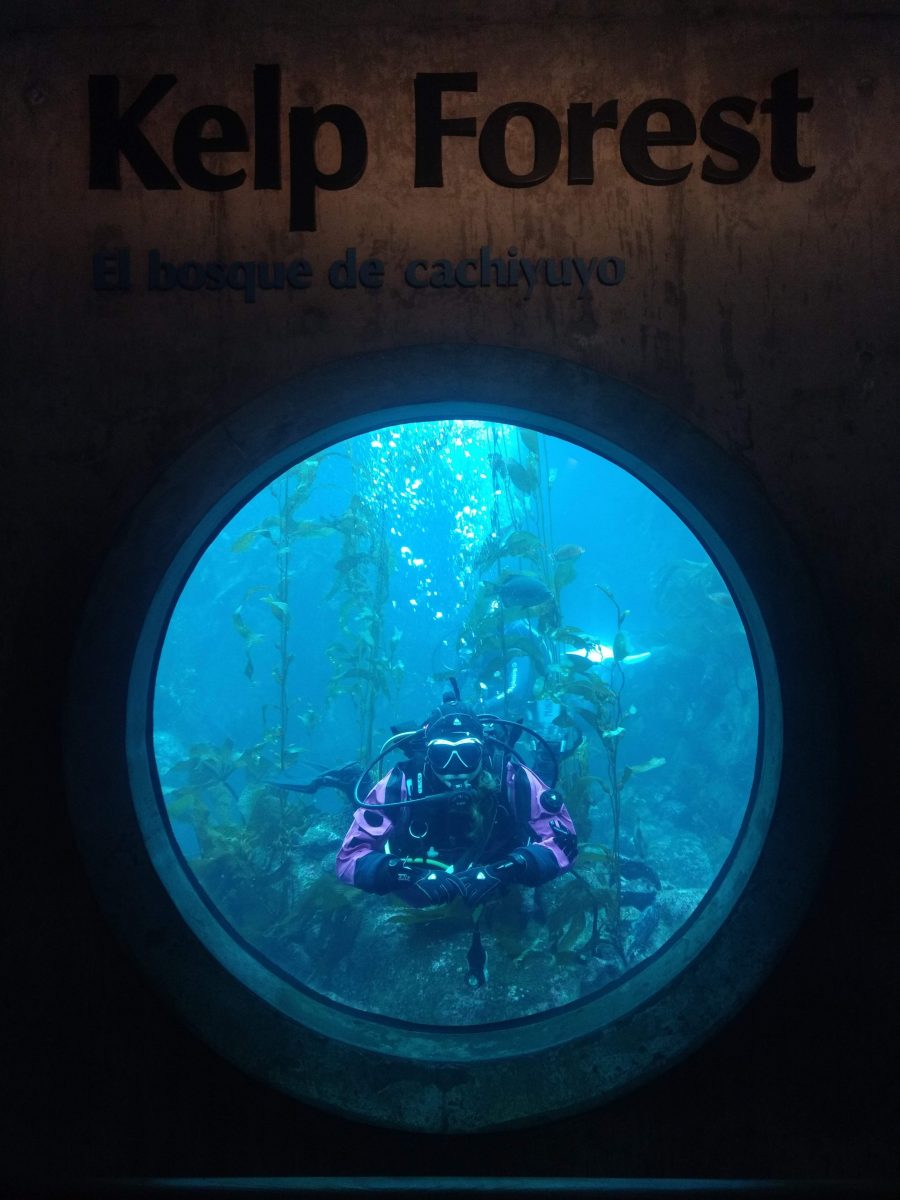
Photo: Scott Chapman
From Monterey, I packed my bags and took the train south to Santa Barbara where I met with 2017 OWUSS National Parks Service intern Shaun Wolfe. Since his internship, Shaun has built a successful career as a photojournalist and underwater filmmaker. Check out some of his amazing work here. Shaun showed me all the best sights Santa Barbara has to offer.
From Santa Barbara, I was able to head out and dive the Channel Islands. The Channel Islands were beautiful and up there with some of the best diving I have ever done. As a temperate water enthusiast, seeing the kelp density and health was spectacular. To see so much colour and fish life gave me a sense of nostalgia what we have lost in Tasmania.
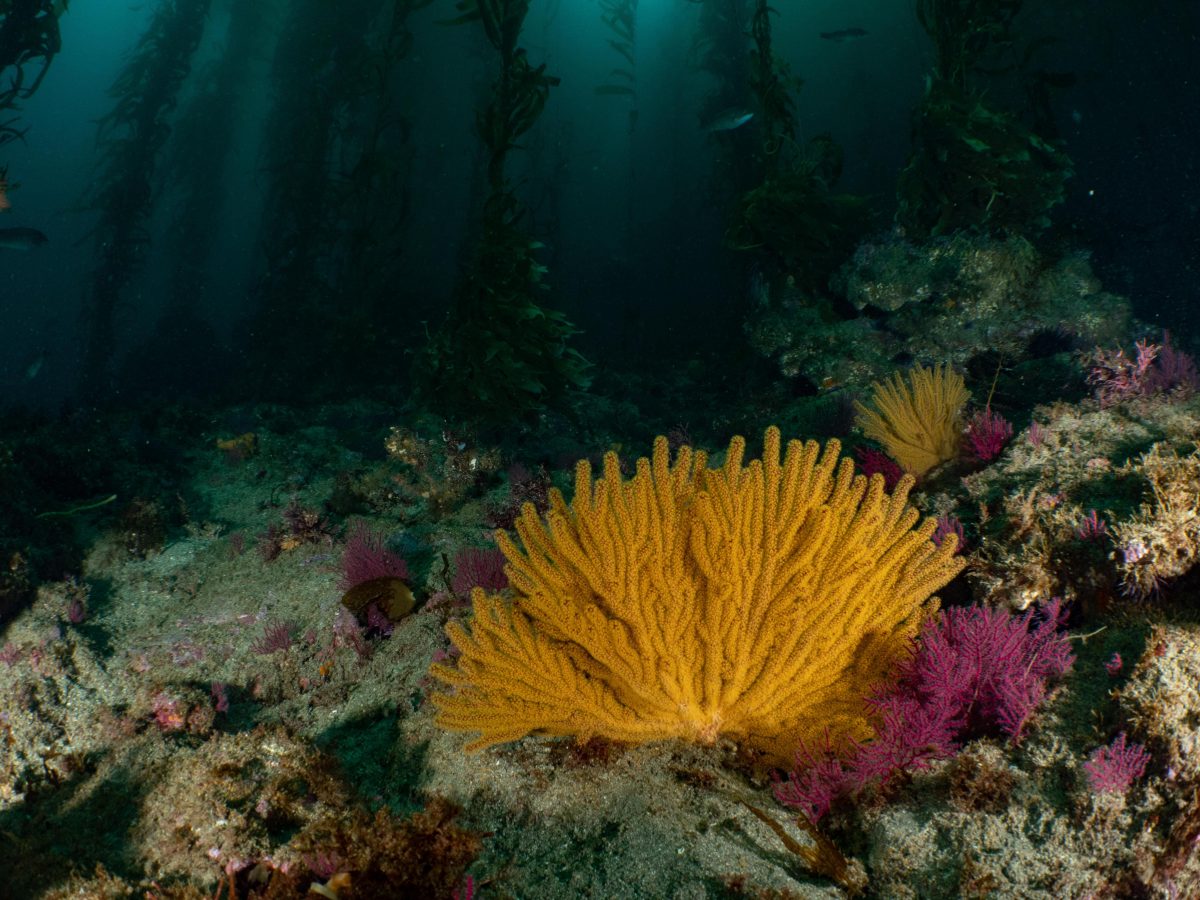
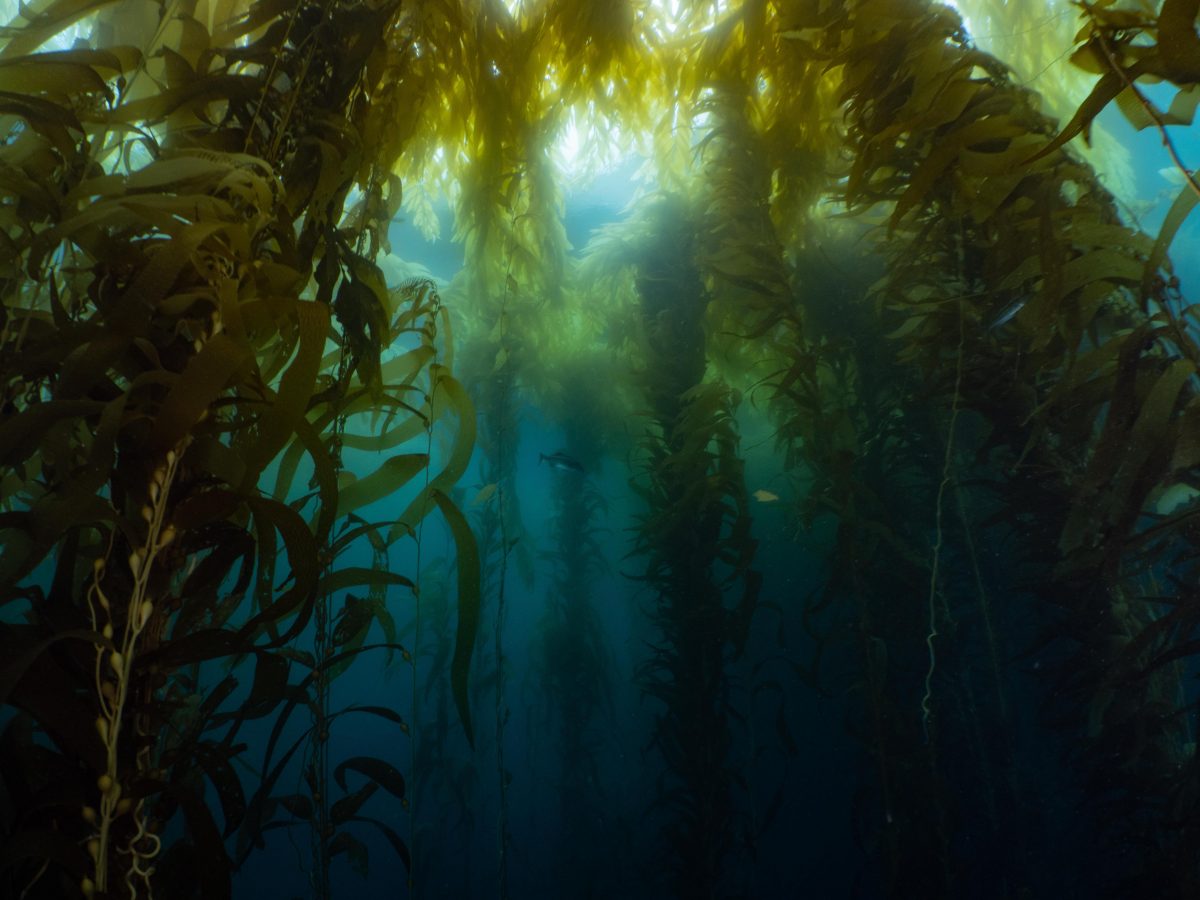
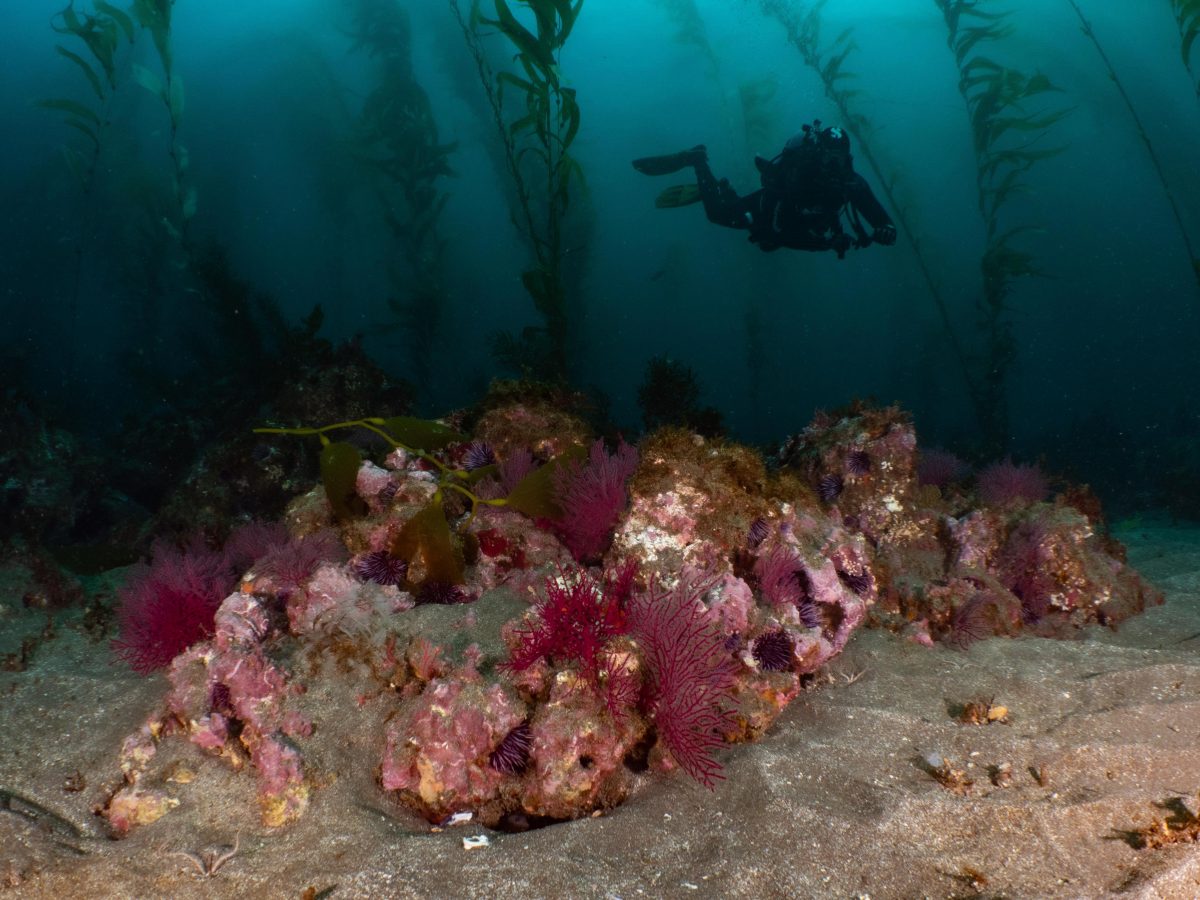
Photos: Joanna Smart
Whilst on these dives I had the most incredible encounter with a harbour seal. The seal stayed with me for the entire dive, nibbling on my fins and rubbing itself against me. It was one of the most amazing encounters I have ever had with a marine animal!
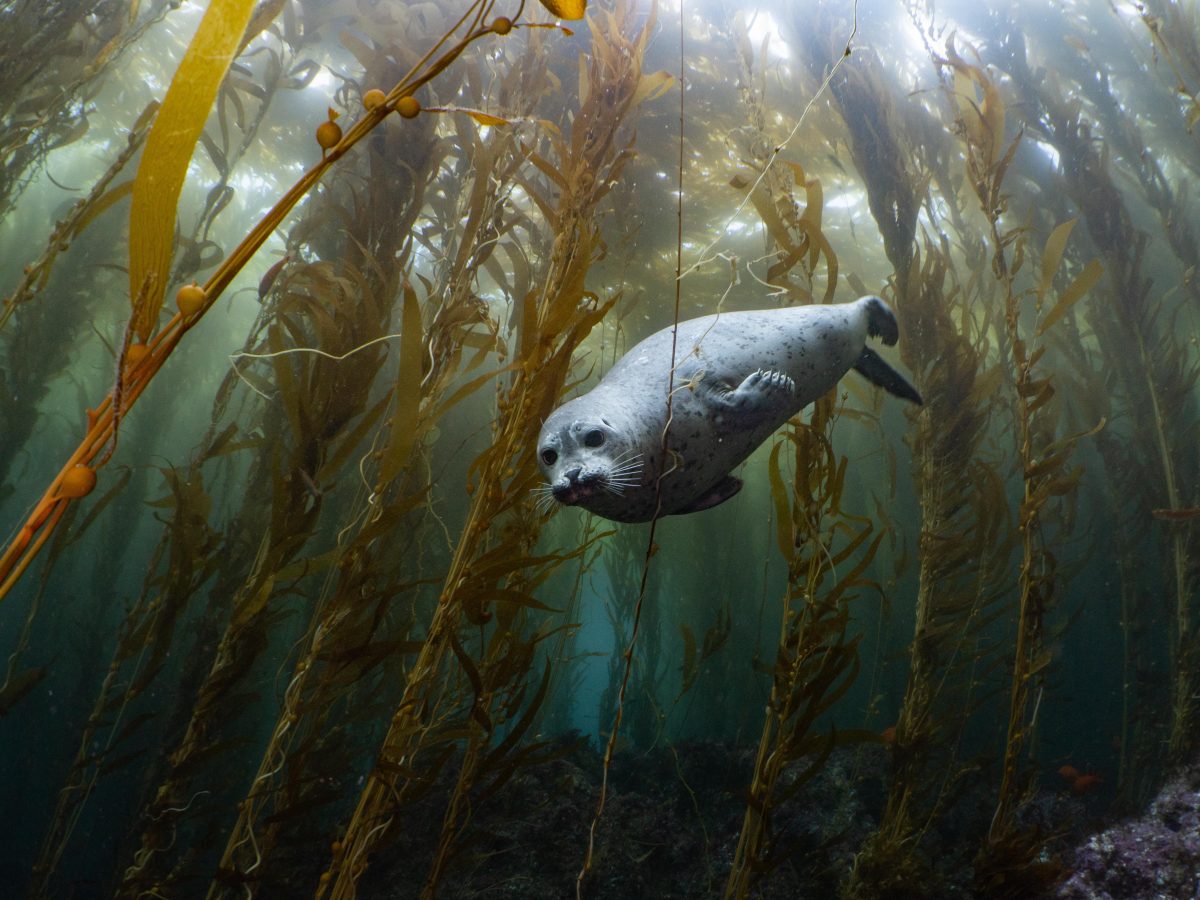
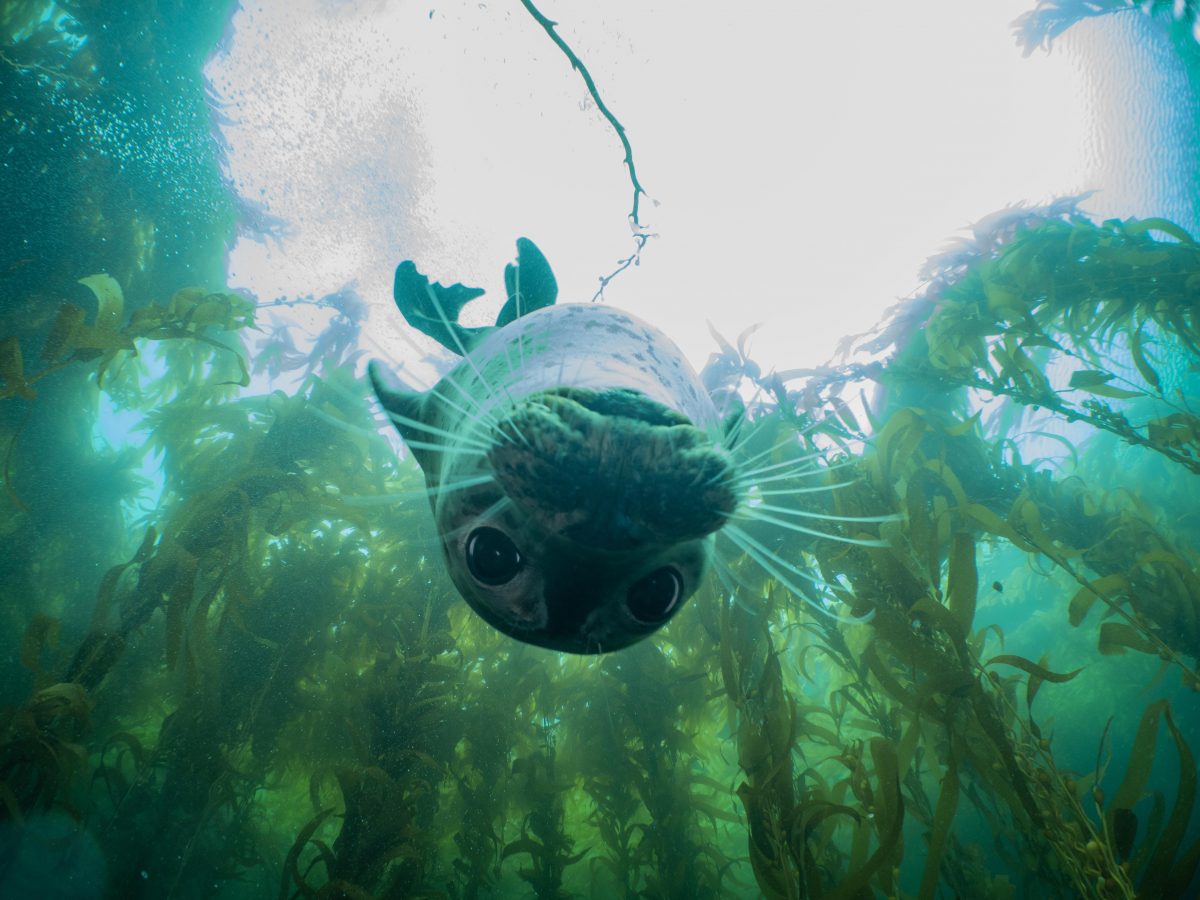
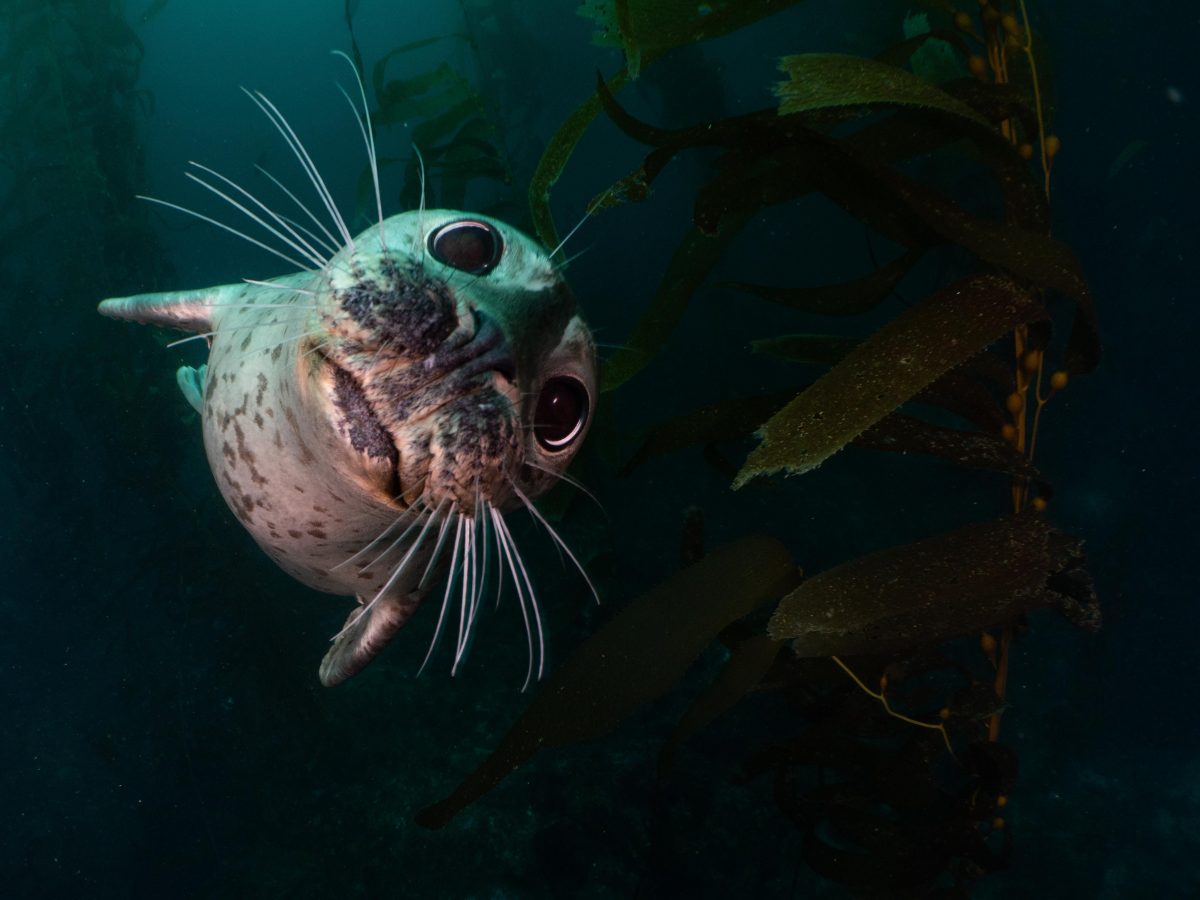
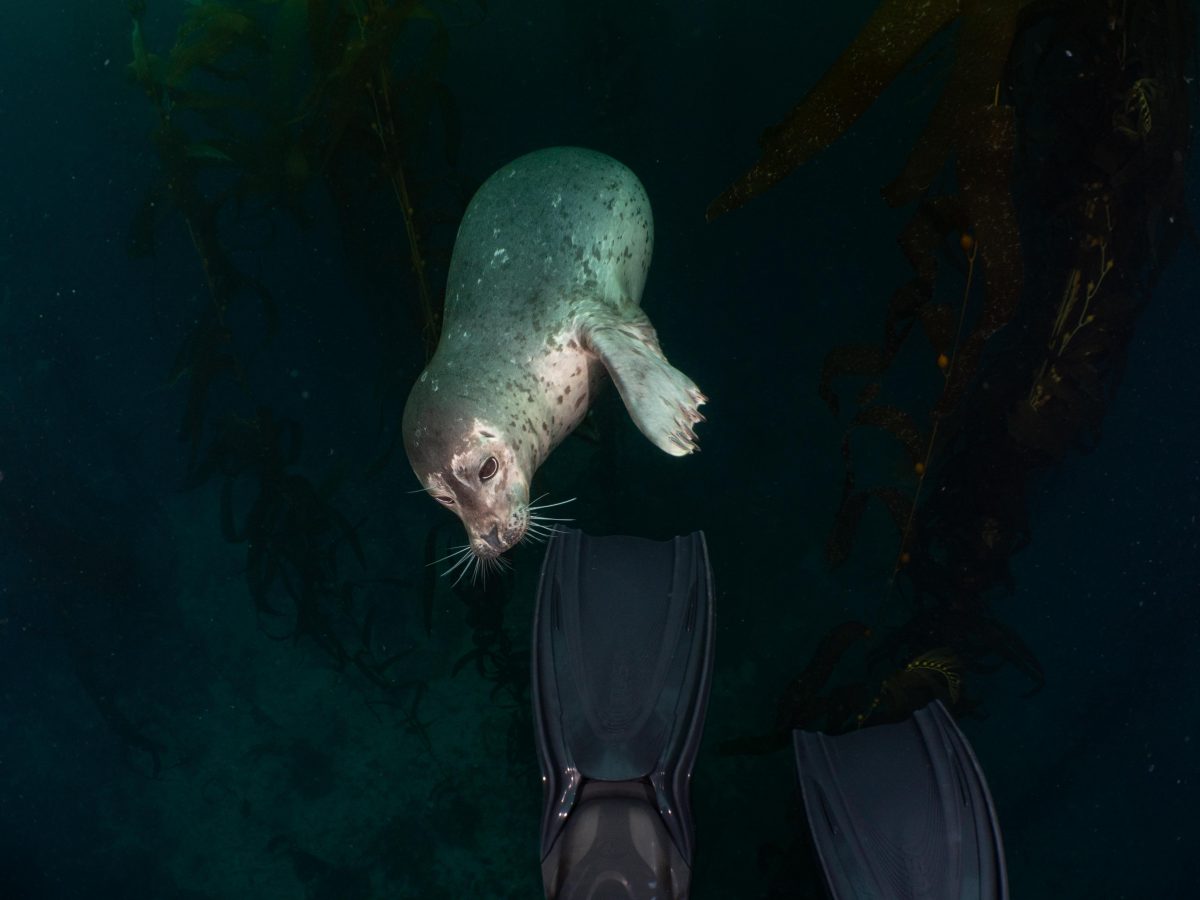
Photos: Joanna Smart
Thank you so much to Shaun for providing me with the opportunity to see these giant kelp forests in their full glory.
From Santa Barbara, it was back on board the train where I continued my journey south and headed out to Catalina Island, off the coast of Los Angeles to join Karl Huggins and the University of Southern California Wrigley Institute.
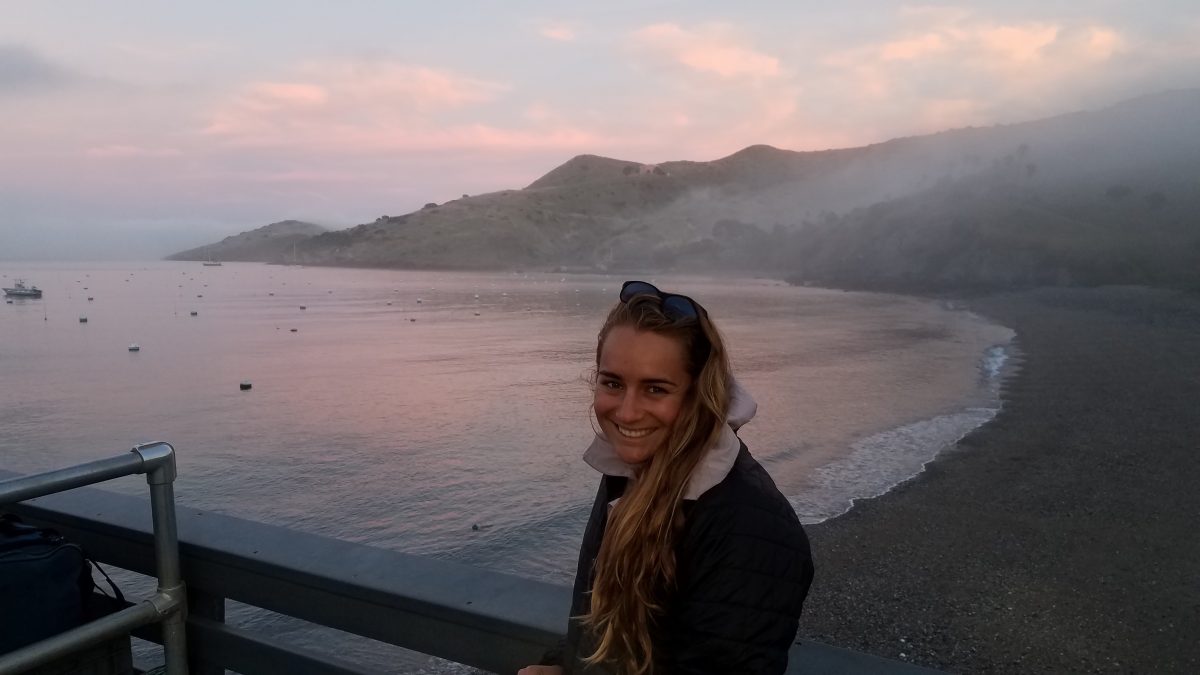
Photo: Karl Huggins
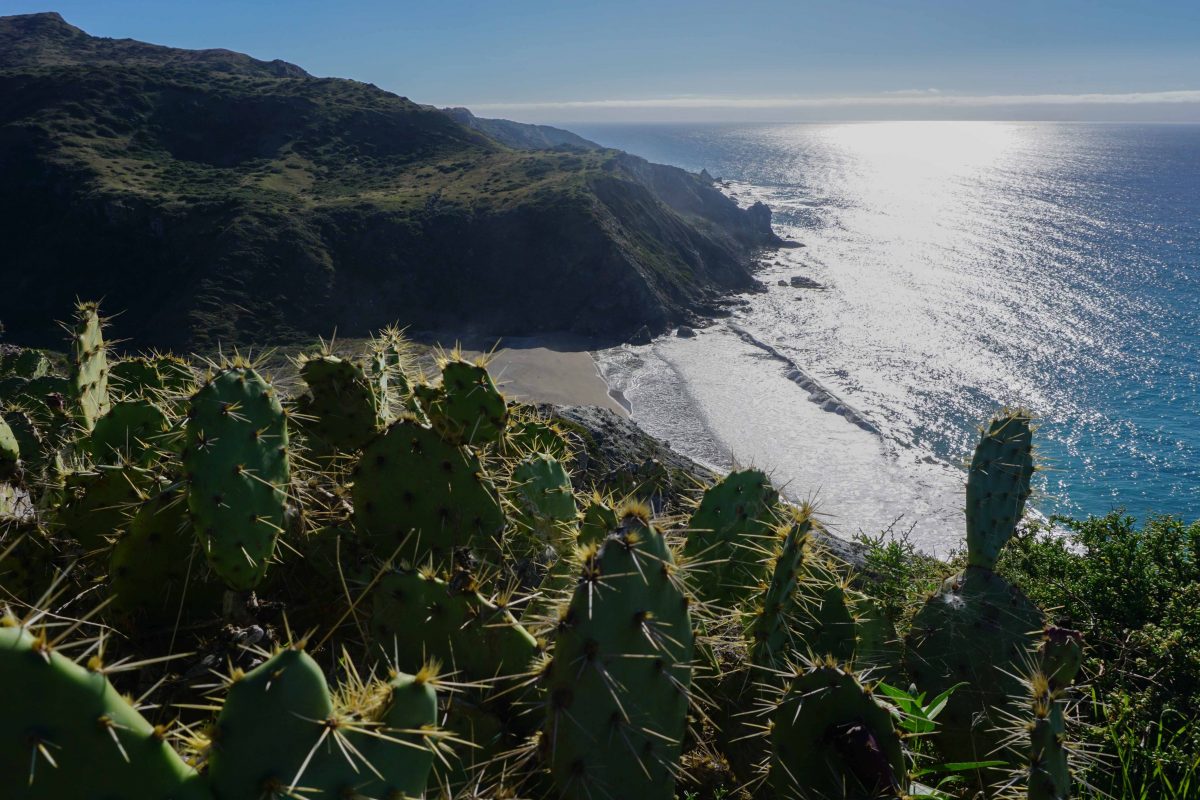
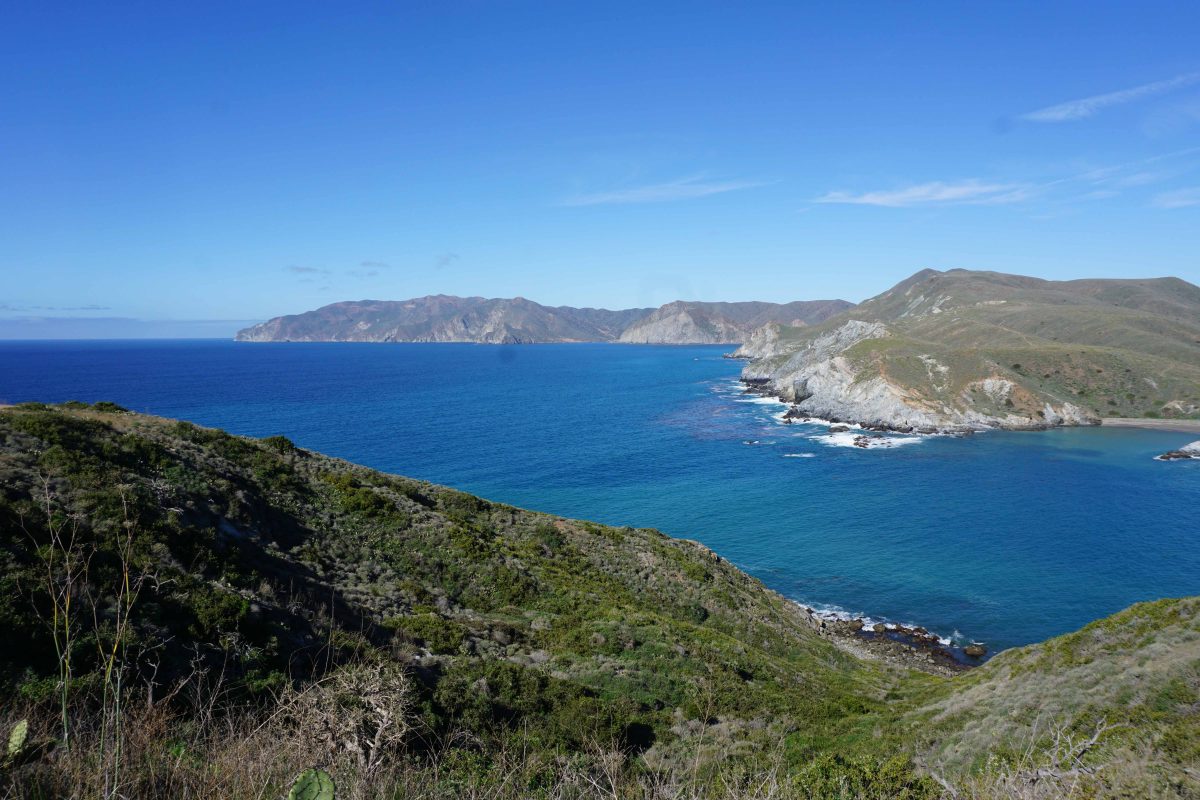
Photos: Joanna Smart
Karl lives on Catalina Island and runs the hyperbaric chamber on the island. The USC Wrigley chamber has been in operation since 1974 and treated hundreds of divers. A volunteer-run operation, under Karl’s guidance the chamber also contributes to a variety of academic research on decompression sickness.
Karl is quite possibly one of the most passionate people about diving safety I have ever met, and it was a privilege to spend a week with him. He taught me the ins and outs of chamber operation. I was even able to run the chamber for a full dive (with no-one in it of course). The graph below shows the profile of the dive I ran!
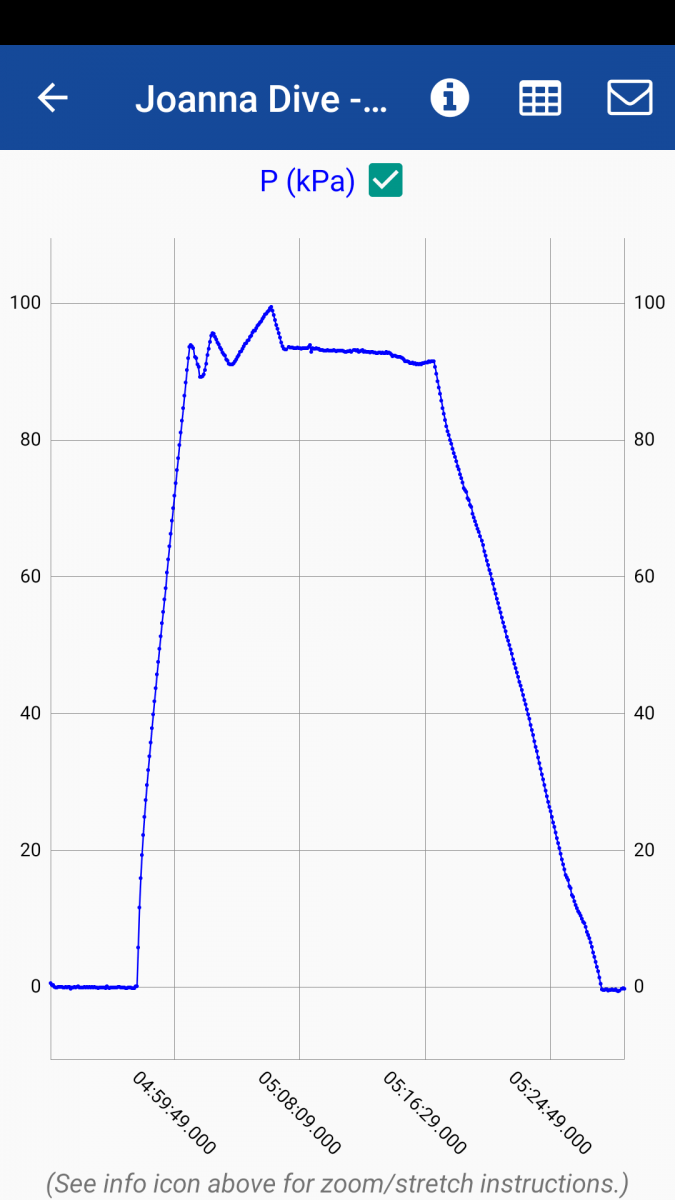
I was also able to complete several dives on Catalina with the dive team. Diving safety officer Eric Castillo and education specialist Lorraine Sadler showed me the underwater environment surrounding Catalina. Kelp forests, soft corals and fish were everywhere along with the famous Garibaldi, the state fish of California.
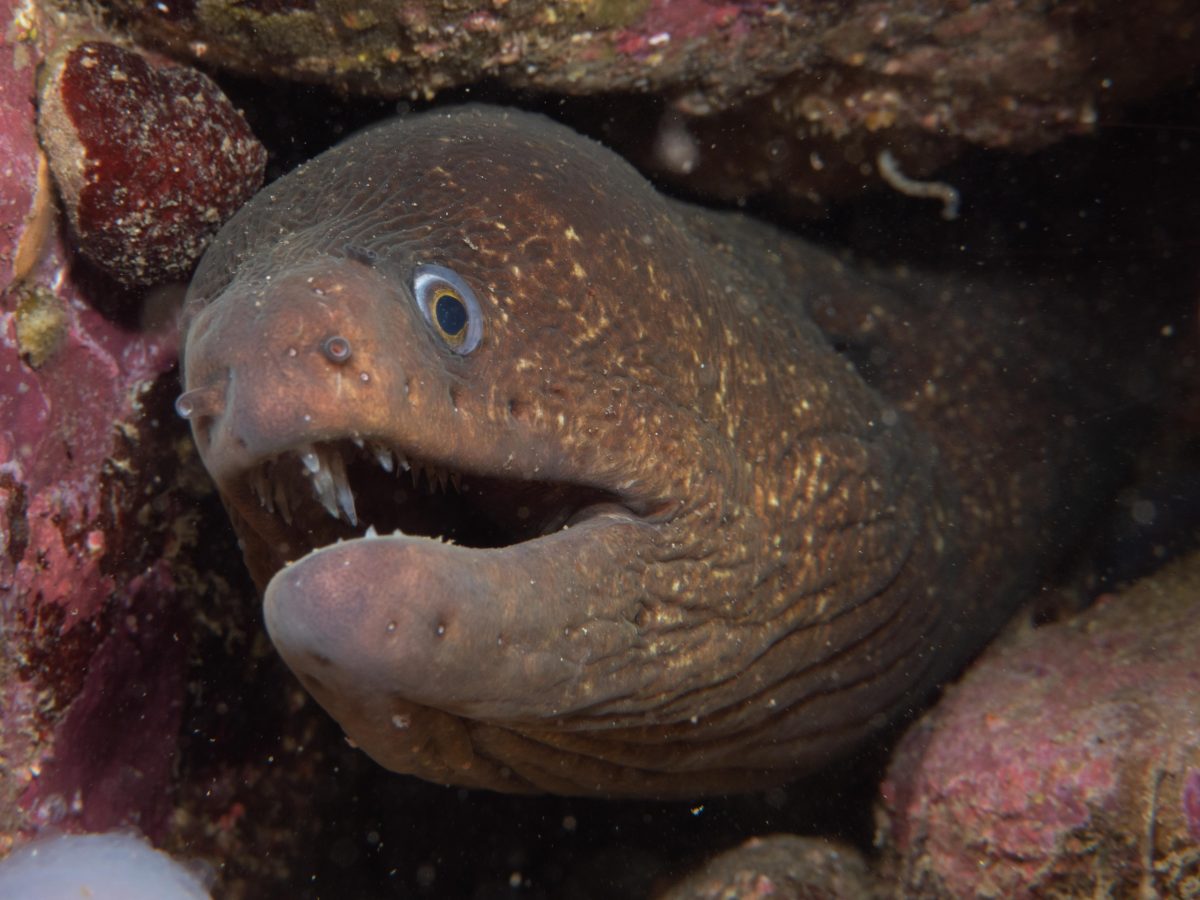
Photo: Joanna Smart

Photo: Joanna Smart
Karl and I then headed back to Los Angeles, where Karl was to teach a course on chamber operation to a new cohort of volunteers. This course covered everything from decompression theory to chamber operations and paperwork. It was fascinating to learn from Karl’s wealth of knowledge about how I can be a safer diver.
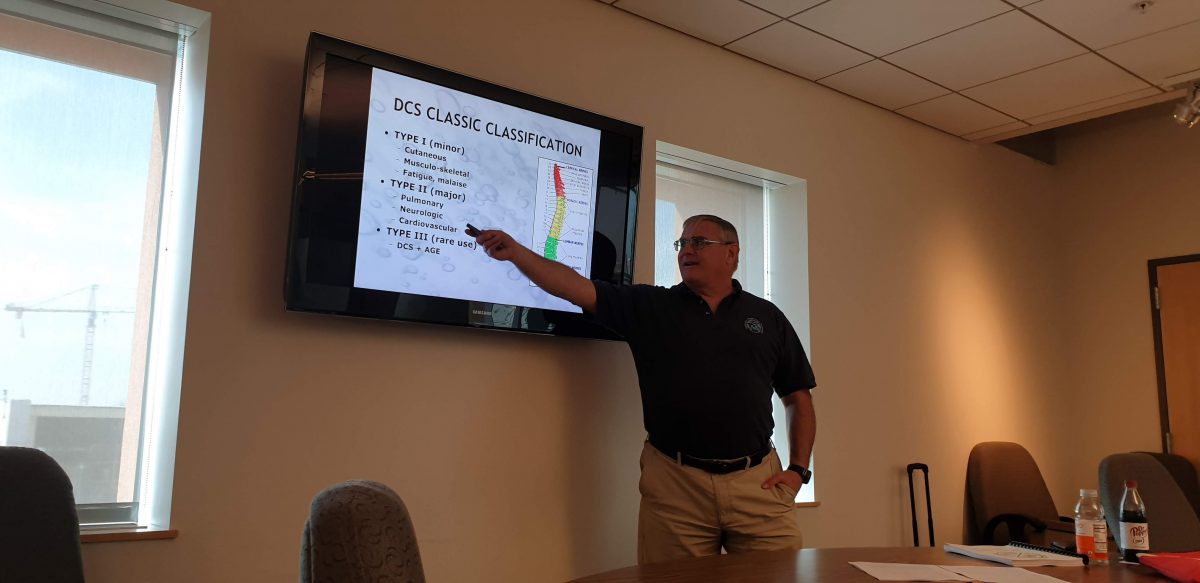
Photo: Joanna Smart
In addition to this, the course took place at the California science centre (CSC), one of the most impressive institutions I have ever seen. Free to the public, the CSC is a centre where people can interact with science through exhibits, live demonstrations and interactive programs.
As part of this, the CSC has its own aquarium with a giant kelp forest exhibit. Diving Officer, Lee-Roy Haarhaus, invited me to dive in the exhibit. After my experiences at Monterey, I was addicted to diving in aquariums and jumped at the chance. I was able to head into the water with their volunteer teams for both the animal feeding and the interactive show, where a diver uses full-face communications to interact and chat to people outside the exhibit. It was great to see from the inside how aquariums play such an important role in educating and engaging the public with the marine environment. High-fiving children through the glass was a particular highlight.

Photo: Lee-Roy Haarhaus

Photo: Lee-Roy Haarhaus
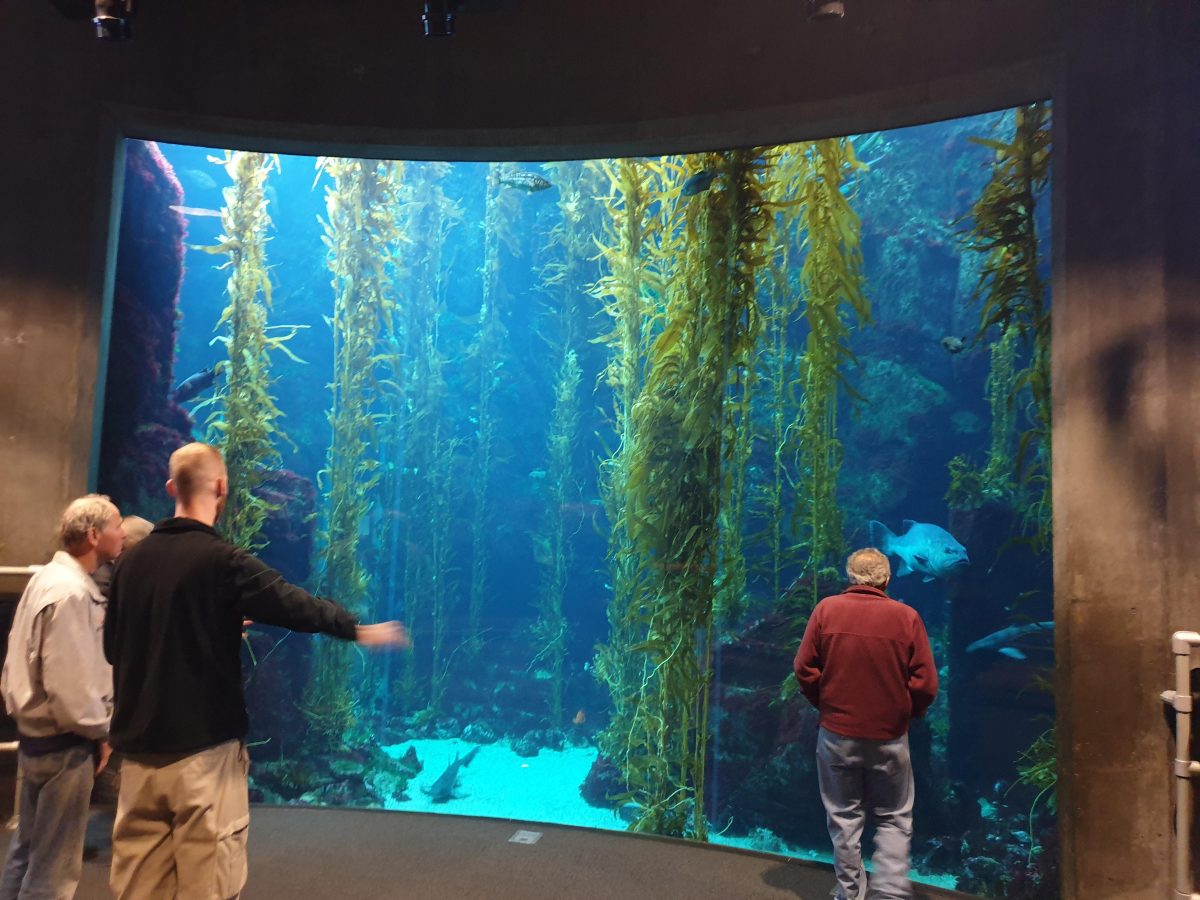
Photo: Joanna Smart
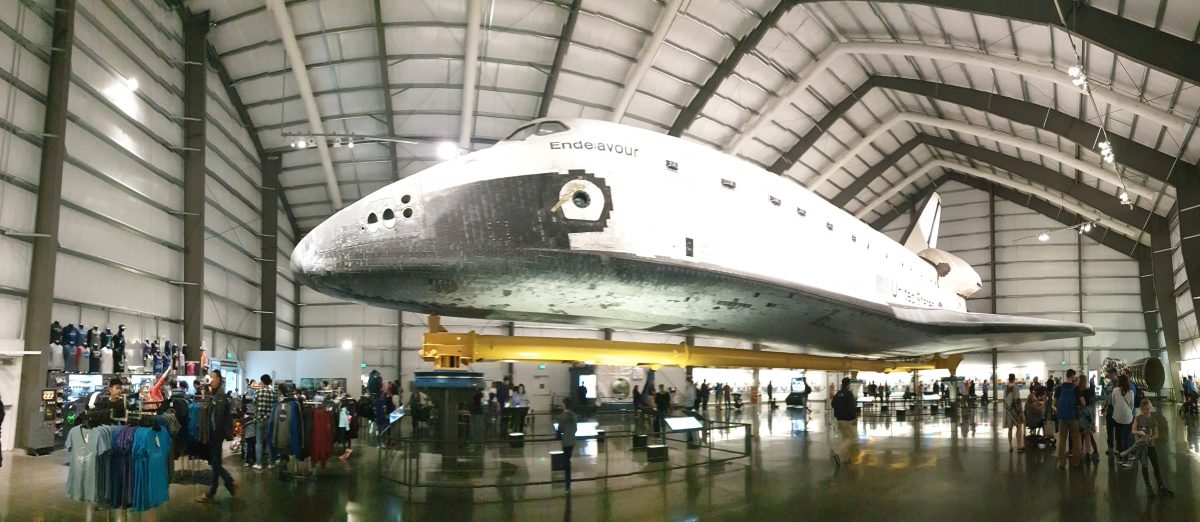
Photo: Joanna Smart
My time so far in California has given me a new appreciation for the east coast of the United States. The unique marine environment and incredible diving in the region made it clear why California is such a prominent epicentre of marine science, diving and research.
Thank you to everyone who has helped so far on my California journey. The hosts, sponsors and friends have made this trip fantastic and I am forever grateful for all of the opportunities offered to me by the Our World Underwater Scholarship Society. Thank you to Rolex, Waterproof, Tusa, Reef Photo and Video, Paralenz, Light and Motion and Mako Eyewear for making this journey possible.
Next stop – San Diego!